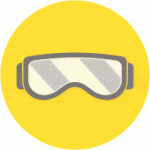Good vision is essential for safe driving. Even a small loss of vision can affect how well you read road signs or see objects from a distance. Good peripheral vision is also very important for driving safely as many everyday driving tasks, such as merging, changing lanes and seeing pedestrians require peripheral vision.
Skills needed for safe driving
Today’s driver faces increasingly busy roads and many complex decisions.
How well you see in the distance is the most important visual skill for driving. Poor distance vision becomes more dangerous as speed increases, because the faster you drive, the less time you have to react to what you see.
Both your eyes need to work together as a team to help you judge distances correctly, while your field of vision (side vision) allows you to see traffic and pedestrians without looking away from the road.
Other vision factors that affect driving
Safe driving at night requires the ability to see in low light levels, beyond the range of the car headlights. It also requires the ability to recover quickly from the glare of oncoming headlights. Night vision deteriorates with age in all of us. Chat with your optometrist about ways you can address this.
Colour vision plays an important part in road safety. Drivers who have difficulty distinguishing colours can learn to distinguish traffic signal lights by their position and differences in brightness.
If you are troubled by glare or concerned about your vision while driving, make an appointment to see your optometrist. He or she will be able to inform you about technologies and special features available that may be able to improve your vision on the road.











